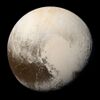Astronomy:(543354) 2014 AN55
| Discovery[1] | |
|---|---|
| Discovered by | Pan-STARRS 1 |
| Discovery site | Haleakala Obs. |
| Discovery date | 25 January 2014 |
| Designations | |
| 2014 AN55 | |
| Minor planet category | TNO[2] · SDO[3] distant[1] |
| Orbital characteristics[2] | |
| Epoch 31 May 2020 (JD 2459000.5) | |
| Uncertainty parameter 2[2] · 0[1] | |
| Observation arc | 14.86 yr (5,429 d) |
| Earliest precovery date | 12 March 2005 |
| |{{{apsis}}}|helion}} | 77.584 AU |
| |{{{apsis}}}|helion}} | 34.256 AU |
| 55.920 AU | |
| Eccentricity | 0.3874 |
| Orbital period | 418.18 yr (152,739 d) |
| Mean anomaly | 317.05° |
| Mean motion | 0° 0m 8.64s / day |
| Inclination | 9.4372° |
| Longitude of ascending node | 283.94° |
| |{{{apsis}}}|helion}} | ≈ 8 March 2070[4] ±1.5 days |
| 307.63° | |
| Physical characteristics | |
| Mean diameter | 583 km (est.)[5] 671 km (est.)[3][6] |
| Geometric albedo | 0.09 (assumed)[3] 0.10 (assumed)[5] |
| Absolute magnitude (H) | 4.1[1][2] 4.3[7] |
(543354) 2014 AN55 (provisional designation 2014 AN55) is a trans-Neptunian object in the scattered disc, located in the outermost region of the Solar System, that measures approximately 600 kilometres (370 mi) in diameter. It was discovered on 25 January 2014, by astronomers with the Pan-STARRS survey at Haleakala Observatory on the island of Maui, Hawaii, in the United States.[1]
Orbit and classification
2014 AN55 belongs to the gravitationally perturbed population of scattered disc objects,[3] which, at their closest approaches, come close to Neptune's orbit at 30 AU, but their farthest distances reach many times of that.
It orbits the Sun at a distance of 34.3–77.6 AU once every 418 years and 2 months (152,739 days; semi-major axis of 55.92 AU). Its orbit has an eccentricity of 0.39 and an inclination of 9° with respect to the ecliptic.[2] The body's observation arc begins with its first observation taken by the Sloan Digital Sky Survey on 12 March 2005.[1]
Numbering and naming
This minor planet was numbered by the Minor Planet Center on 5 February 2020 (M.P.C. 121072) and has not yet received a name.[8]
Physical characteristics
Diameter and albedo
Using an absolute magnitude of 4.3 from the Asteroids—Dynamic Site,[7] and assuming an albedo in the range of 0.05 to 0.25, the object's mean-diameter may be as low as 370, and as high as 820 kilometers.[6] Johnstons's Archive assumes a similar albedo of 0.9 and calculates a diameter of 671 kilometers using an absolute magnitude of 4.1.[3][6]
References
- ↑ 1.0 1.1 1.2 1.3 1.4 1.5 "(543354) 2014 AN55". Minor Planet Center. https://www.minorplanetcenter.net/db_search/show_object?object_id=543354. Retrieved 2 March 2020.
- ↑ 2.0 2.1 2.2 2.3 2.4 "JPL Small-Body Database Browser: 543354 (2014 AN55)". Jet Propulsion Laboratory. https://ssd.jpl.nasa.gov/sbdb.cgi?sstr=2543354. Retrieved 2 March 2020.
- ↑ 3.0 3.1 3.2 3.3 3.4 Johnston, Wm. Robert (30 December 2017). "List of Known Trans-Neptunian Objects". Johnston's Archive. http://www.johnstonsarchive.net/astro/tnoslist.html. Retrieved 2 March 2020.
- ↑ JPL Horizons Observer Location: @sun (Perihelion occurs when deldot changes from negative to positive. Uncertainty in time of perihelion is 3-sigma.)
- ↑ 5.0 5.1 Michael E. Brown. "How many dwarf planets are there in the outer solar system?". California Institute of Technology. http://web.gps.caltech.edu/~mbrown/dps.html. Retrieved 2 March 2020.
- ↑ 6.0 6.1 6.2 "Asteroid Size Estimator". CNEOS NASA/JPL. https://cneos.jpl.nasa.gov/tools/ast_size_est.html. Retrieved 2 March 2020.
- ↑ 7.0 7.1 "(543354) 2014AN55 – Summary". AstDyS-2, Asteroids – Dynamic Site. https://newton.spacedys.com/astdys/index.php?n=2014AN55&pc=1.1.0. Retrieved 2 March 2020.
- ↑ "MPC/MPO/MPS Archive". Minor Planet Center. https://www.minorplanetcenter.net/iau/ECS/MPCArchive/MPCArchive_TBL.html. Retrieved 2 March 2020.
External links
- List Of Centaurs and Scattered-Disk Objects, Minor Planet Center
- Discovery Circumstances: Numbered Minor Planets (1)-(5000) – Minor Planet Center
- (543354) 2014 AN55 at AstDyS-2, Asteroids—Dynamic Site
- (543354) 2014 AN55 at the JPL Small-Body Database
 |



